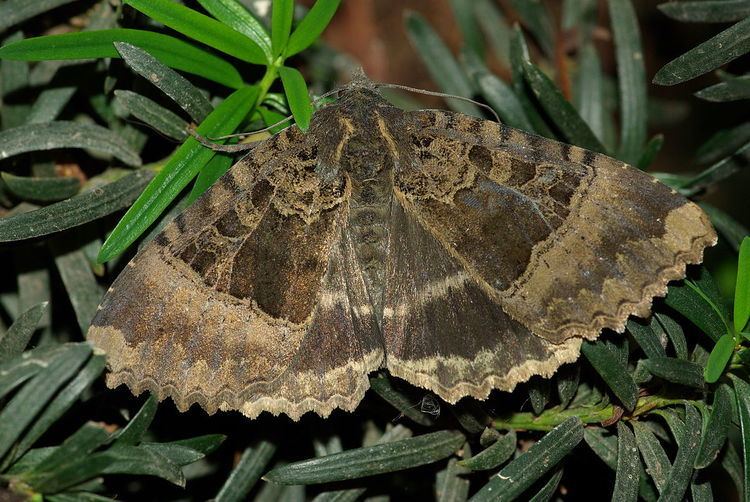Rank Species | Genus Mormo Order Butterflies and moths | |
 | ||
Similar Mormo, Butterflies and moths, Frosted orange moth, Small angle shades, Hoplodrina octogenaria | ||
Maure mormo maura de jour bruitx
Mormo maura, the old lady or black underwing, is a moth of the family Noctuidae. It is found in the Palearctic ecozone (found from north-western Africa through all over southern Europe. It reaches its northern border in the west in northern Ireland and central Scotland, in central Europe, in northern Germany and Poland. In some Nordic countries, there are single finds. The other occurrence areas include Turkestan, Anatolia, the Middle East and Iraq)
Contents
- Maure mormo maura de jour bruitx
- Mormo maura rumex
- Technical description and variation
- Biology
- Habitat
- References
Mormo maura rumex
Technical description and variation
The wingspan is 55–65 mm. The length of the forewings is 30–36 mm. Forewing dull fuscous blackish, the median area usually darker; the paler ground colour being really ochreous grey, thickly dusted with fuscous;subbasal line double, forming two series of groups of black scales across basal area; inner and outer lines double, filled in with pale, both oblique basewards below vein 1; median vein and its branches pale; subcostal space with 5 black blotches above median area; orbicular stigma large, oblique, pale with dark dusting; reniform dark with pale outline, widened outwards on both sides below; submarginal line pale preceded by a dark fuscous shade, angled outwards above and below middle; apical area above vein 6 pale grey; hindwing dull fuscous, with a straight pale band beyond middle, followed by a broad black striata, subterminal border, outwardly edged by a pale submarginal line; in the form striata Tutt the transverse lines as well as the median vein and veinlets are conspicuously pale.
Biology
The moth flies in one generation from mid-June to mid-September [1].
Larva pale ochreous clouded with darker; dorsal and subdorsal lines whitish, irregular, with oblique pale darker-edged streaks between;spiracles reddish above a yellow line above the feet; on the 11th. segment a yellowish white black-edged transverse stripe. The larvae feed on various herbaceous plants in the early stages(Salix, Alnus, Rumex, Senecio, Taraxacum) later it feeds on various deciduous trees and shrubs.
Habitat
Mostly near water, so in river valleys, meadows, bogs, as well as in the shore areas of streams, ponds and lakes.
